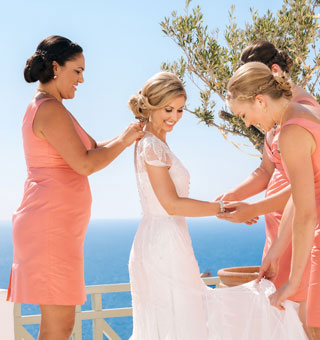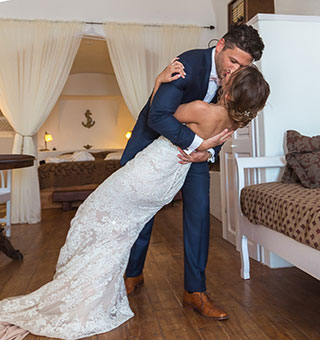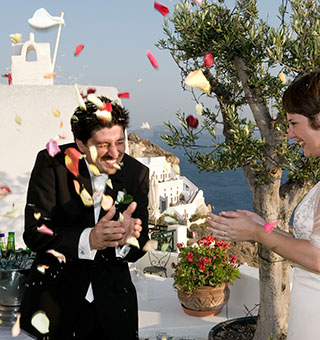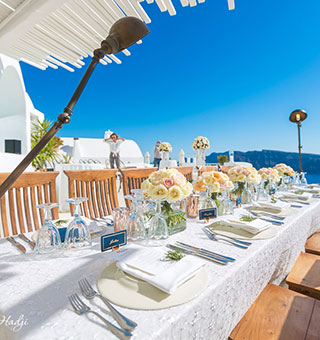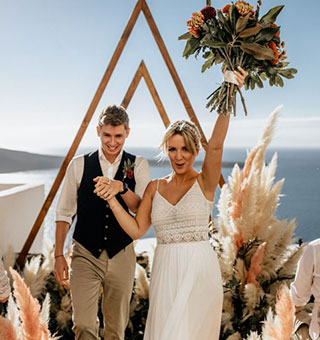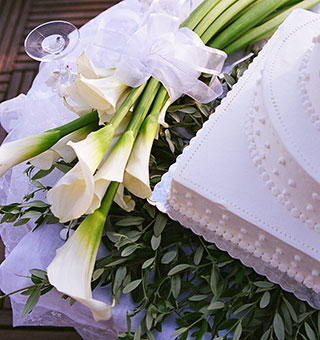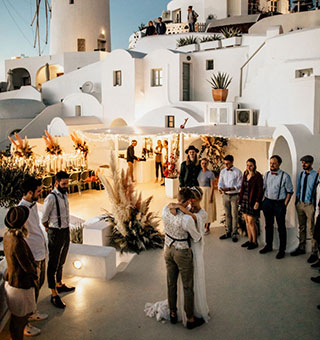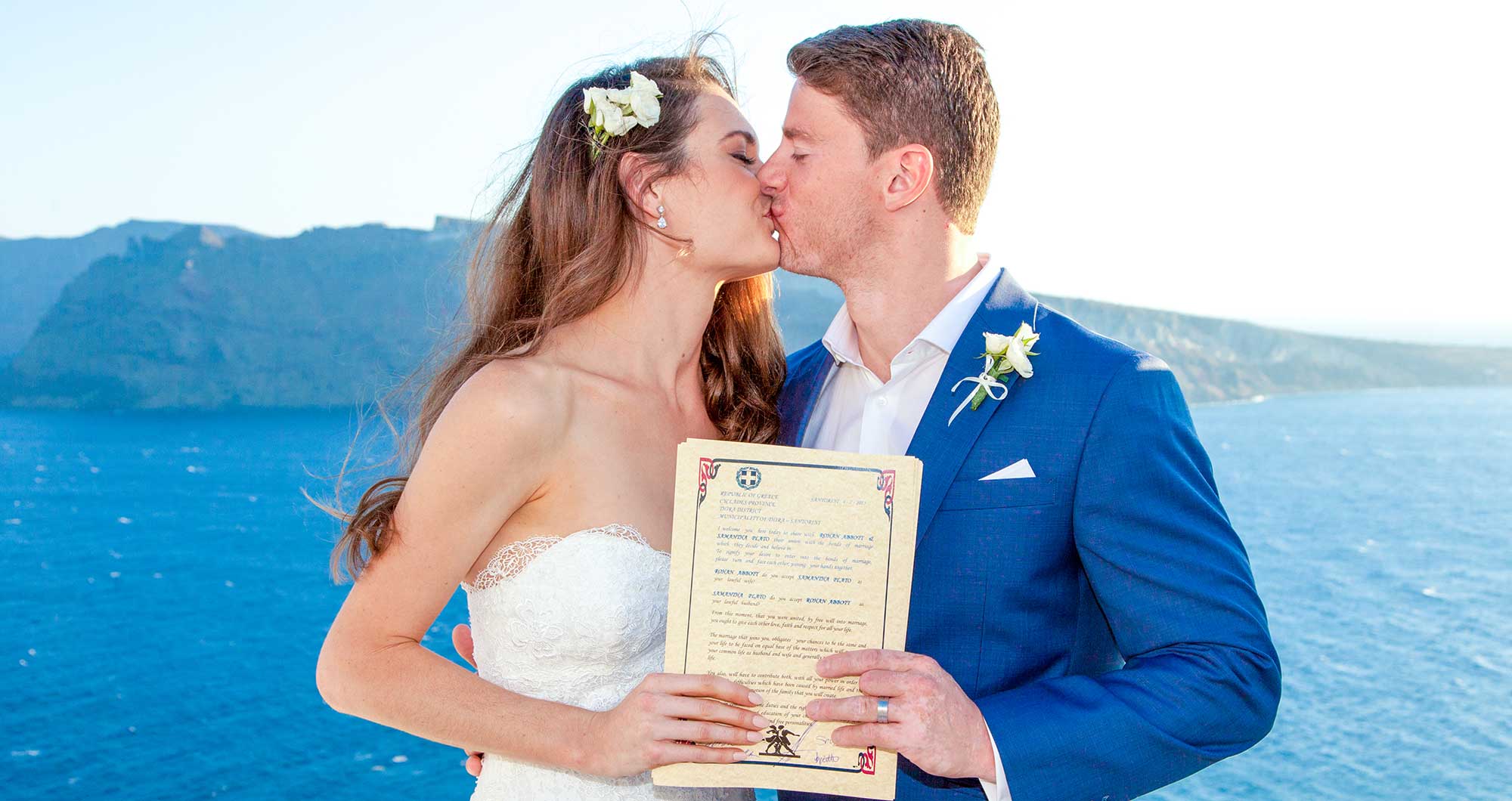

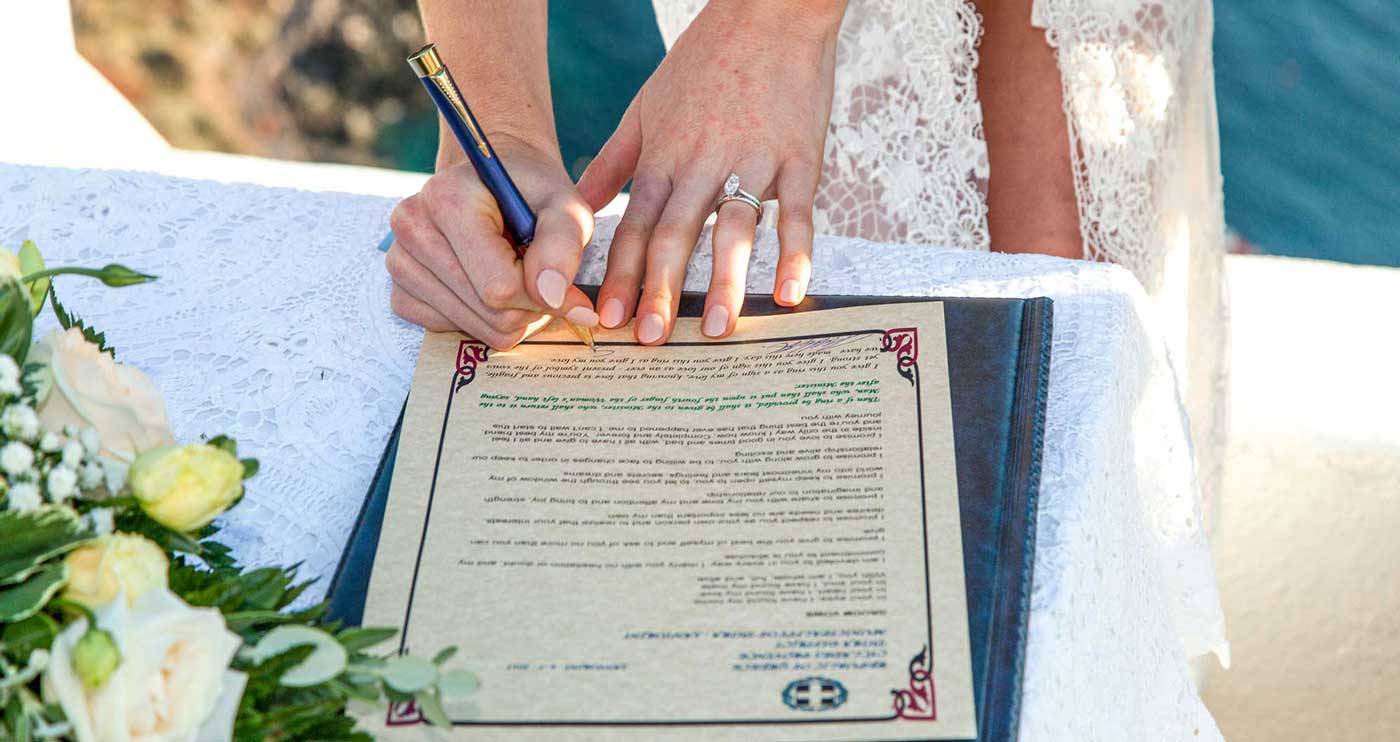

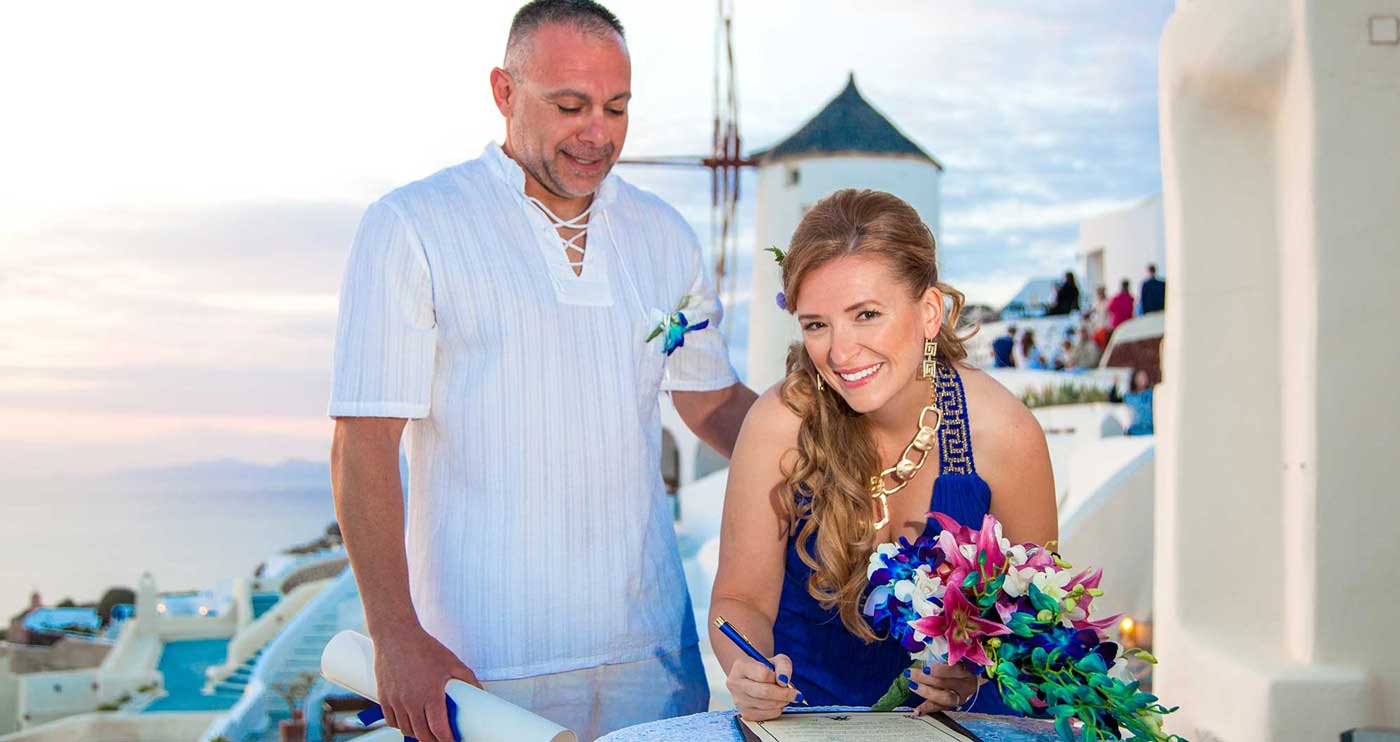
_DSC7811.jpg
_DSC7811.jpg
_DSC7811.jpg
_DSC7811.jpg
_DSC7811.jpg
For your civil wedding in Santorini, Greece to be legally valid worldwide, the following documents must be submitted:
Have the original documents with you when you come to Santorini to submit to the town hall or church.
If you would like to keep the originals, you must obtain certified copies of the original documents, and have those apostilled and translated instead.
Both the bride and the groom are required to pay a small fee each to the tax office in Greece.
* Apostille: must be issued by the state/country where the document was issued, regardless of your current place of residence (for example, if you possess a British Birth Certificate, the Apostille seal must be issued in Britain).
ALL documents must be authenticated with an Apostille Seal.
An Apostille is a stamp that validates a document, ensuring that it is recognized in all foreign countries that have signed The Hague Convention Treaty.
Generally speaking, a document is only valid in the country it was issued.
In the past, the process of getting a document validated and recognized in another country was extremely complicated and time-consuming, involving a number of authorities in the country where it was issued and validation by the consulate of the country in which the document was to be recognized.
The Hague Convention Abolishing the Requirement of Legalization of Foreign Public Documents, popularly known as the Hague Convention, which was established in 1961, deals in this matter, replacing the certification process that was used up till that time, i.e. going to four different authorities to get certification of a document. For the purpose of making this process easier and quicker, many countries, including the U.S.A. and Australia, signed an international treaty concerning the mutual recognition of documents, called the Hague Convention, as previously noted.
According to the Hague Convention, a document that has been issued in any country that has signed the treaty, is recognized in all other such countries if it bears an Apostille stamp, which marks the validation of the document by the superior office in the country and state (province) where it was issued. In the U.S.A, an Apostille is provided by the Secretary of State, as well as the Deputy Secretary of State in each individual state.
An Apostille can be used in the event that a copy of an official document from another country is required. It is an official certification that a document is a true copy of the original. Apostilles are often requested for documents that are required in the event of: international marriages, contracts, adoptions, and inheritance matters.
Some documents may have an alternative name in your country/state. Make sure that you receive the appropriate document with the required information.
Kindly email all the documents and their apostilles to us so that we may review them prior to translation. Upon our confirmation that they are all in tact, you may proceed with their translation.
The Greek authorities require that ALL documents requested (apart from the Divorce Certificate) must be issued NO more than 3 months prior to the wedding date.
All documents with Apostille seals, etc, and their translations must be emailed to us at least 30 days prior to the date of the wedding.

*Greek Translation: must be obtained at your local Greek Embassy or Consulate or the Ministry of Foreign Affairs in Athens Greece. Translation by any other authority or independent translator with a notary stamp will NOT be accepted.
***A marriage cannot take place in Santorini Greece if:
Holy Matrimony is a Sacrament of the Greek Orthodox Church in which a man and a woman are united together “in faith, and in oneness of mind, in truth, and in love.”
The wedding ceremony of the Greek Orthodox Church is an ancient and meaningful service that has been celebrated in its present form for centuries. The service is abundant with symbols that reflect marriage: love, mutual respect, equality and sacrifice.
In a traditional Greek Orthodox Wedding, the engagement and the reception are included as part of the whole ceremony. Although in today’s society the “engagement” on the day is more of a formality than an actual betrothal, it is carried out with as much seriousness as the vows and the prayers. Once the father of the bride agrees to the marriage, the Koumbari (religious sponsors) lead the couple to the church.
Once the wedding party arrives at the church, the service begins. A typical Greek wedding usually lasts about an hour.
First, the Koumbara/o places “stefana”, or crowns, on the heads of the couple. The crowns are attached by a ribbon and they switched three times on the heads. These crowns symbolize that the marriage is noble, and that the couple will begin a new dynasty together.
For the rest of the service, they are viewed as a king and queen, and from this point on, neither the bride nor groom can speak.
Being asked to be the Koumbaro and/or Koumbara is a great honor in the Greek Orthodox faith. The Koumbari have a very important role in the wedding service. They act like a director or “sponsor” and instigate the actions of the ceremony. Along with the couple and the priest, their role in the ceremony is a necessity and carries great weight.
The Koumbari must belong to the Christian Orthodox faith. The Koumbaro/a is the person who, among other responsibilities, exchanges crowns and the veres (wedding rings) three times of the wedding couple during the ceremony.
Koufetta, the Greek name for Jordan almonds, are placed on the wedding tray along with the wedding stefana (“crowns”). This tray is also decorated with rice. Sometimes, the wrapped koufetta are tied onto a wedding favor, also called a bonbonierra. Incidentally, odd numbers of koufetta are used in the favors because odd numbers are indivisible, symbolizing how the wedding couple stand as one and share everything.
The general significance the Jordan almond is that fresh almonds have a bittersweet taste, which represents life. The sugarcoating is added with the hope that the married couple’s life will be more sweet than bitter.
The ceremony consists of two parts which are distinct and separate from each other: The service of the Betrothal and the Ceremony of the Sacrament of Marriage. Everything in the ceremony has a special meaning and significance, especially the repetition of each act three times to symbolize and to invoke the mystical presence of the Holy Trinity.
The Wedding begins as the white candles are handed to the Bride and the Groom. These candles symbolize their spiritual willingness to receive Christ. The right hand of the bride and groom are joined when the prayers are read throughout the service to symbolize the “oneness” of the couple.
Petitions are chanted for the spiritual welfare of the couple. The highlight during this service is the exchanging of the rings. The priest then blesses the rings.
He holds them in his right hand, and making the sign of the cross over their heads, he betroths the servants of God, the Bride to the Groom.
The rings are then placed on their right hands, for it is the right hand of God that blesses, it was the right hand of God to which Christ ascended, and it is also to the right that those who will inherit the eternal life will ascend...
The koumbaro/a then exchange the rings three times.
The exchange signifies that in married life, the weakness of one partner will be compensated by the strength of the other, the imperfections of one, by the perfection of the other. By themselves, the newly betrothed are incomplete, but together they are made perfect.
The rite of the betrothal ends with the priest praying for betrothal of mutual promise, officially given before the church, may prove in true faith, concord and love.
The ceremony consists of petitions, prayers the crowing, readings from the New Testament, the offering of the common cup, the circling of the ceremonial table and the benediction.
At the conclusion of the prayers, the priest joins the hands of the Bride and Groom. The hands are kept joined until the end of the service to symbolize the union and the oneness of the couple.
The wedding proper is highlighted by the following:
The bride and groom each hold a lighted candle during the service, similar to a parable in the Bible where five wise maidens prepare to receive Christ the Bridegroom by lighting their lamps with oil.
The candles remind the couple of the light of Christ who is with them throughout the sacrament and their coming life together.
The couple joins right hands as the priest appeals to God to make them one in spirit and flesh and grant them joy of children. The hands are kept joined throughout the service to symbolize the oneness of the couple.
This is the focal point of the marriage ceremony. The crowns are signs of the glory and honor with which God crowns them with during the sacrament.
The wedding crowns (stefana) are joined by a ribbon which again symbolizes the unity of the couple and establishes them as the King and the Queen of their home, which they will rule with wisdom, justice and integrity.
The priest takes the two crowns and blesses the Bride and the Groom, in the name of Father, and the Son, and of the Holy Spirit and then places the crowns on them. The koumbaro/a then steps behind the Bride and the Groom and interchanges the crowns three times as a witness to the sealing of the union.
Tust as wine was drunk at the wedding in Canaan, the Bride and the Groom share a common cup of unconsecrated wine, symbolizing the sharing of all that life will bring—the joys, sorrows, love and pain.
It is representative of the new life of the Bride and the Groom share with each other.
The rite of crowing is followed by reading of the Epistle and the Gospel. The Gospel reading describes the marriage of Canaan of Galilee, which was attended and blessed by Christ and for which He reserved His first miracle.
There He converted the water into wine and gave it to the newlyweds. Thus, wine is given to the couple as a remembrance. This is the “common cup” of life denoting the mutual sharing of joy and sorrow, the token of a life of harmony.
The drinking of wine from the common cup serves to impress upon the couple that from that moment on they will share everything in life, joys, as well as sorrows, and that they are to “bear one another’s burdens”. Their joys will be doubled and their sorrows halved because they will be shared.
The priest leads the Bride and the Groom in a circle around the table on which are places the Gospel and the Cross, the one containing the word of God, the other being the symbol of our redemption by Jesus.
The Koumbaros/a, follows them holding the ribbon that joins the crowns. The dance proclaims the church’s joy at the new union, similar to the joy of Isaiah the prophet who saw the Messiah in a vision nine hundred years before Christ’s birth. In Greece, guests rain shower the couple with rose petals and rice during the dance.
The Bride and the Groom are taking their first steps as married couple, and the church, in the person of the priest, leads them in the way they must walk. The way is symbolized by a circle, at the center of which is the Gospel and the cross of our Lord. This expresses the fact that the way of Christian living is a perfect orbit around the center of life, who is Jesus Christ our Lord.
The three-fold walk around the altar is looked upon as a religious dance. As the groom and the bride are led around the altar three times in the name of the holy Trinity, three significant chants are sung.
The first speaks of the indescribable joy that Isaiah the Prophet experienced when he envisioned the coming of the Messiah upon the earth. The second reminds us of the glory from God, and the third is exaltation the Holy Trinity.
All three joyful expressions recall the concern of God for the salvation of man from beginning until the end of ages.
Near the end of the ceremony, the priest removes the crowns, charging the newlyweds: “Be magnificent, O bridegroom, as Abraham, and blesses as Isaac and increased as was Jacob. Go your way in peace, performing in righteousness the commandments of God. And you, O bride, be magnified as was Sarah, and rejoiced as was Rebecca, and increased as Rachel, being glad in your husband, keeping the paths of the law, for so God is well pleased.”
The Bride and the Groom are proclaimed husband and wife, at the conclusion of the service. Just before the crowns are removed from their heads, the priest invokes God’s blessings once more. “O Lord, bless these your servants who by your providence, are now joined in the communion of marriage.”
During this ceremonial walk around the table a hymn is sung to the Holy Martyrs reminding the newly married couple of the sacrificial love they are to have for each other in marriage—a love that seeks not its own but is willing to sacrifice its all in one loved.
After the Ceremonial Walk, the priest blesses the couple.
The priest then removes the crowns from the Bride and the Groom and beseeches God to grant to the couple a long, happy and fruitful life together.
He then lifts up the Gospel and separates the couples’ joined hands, reminding them that only God can separate the couple from one another.
This concludes the ceremony and the Bride and Groom are officially married
There are two designated readings from the scriptures.
In the Epistle of Saint Paul to the Ephesians, Paul talks of love and respect.
The husband should love his wife and be prepared to give his life to protect her as Christ gave his life out of love for the church. The wife should respect her husband as the church honors and respects Christ and should submit herself to him. The second reading from the Gospel of Saint John relates the story of Christ at the wedding in Canaan of Galilee and his miracles of changing water into wine.
This reading discloses the idea that Rejoicing always is a fruit of perseverance in daily prayers.
This answers the question of how do we have to handle the daily pressures of life?
By the following :
1) faith that the Lord is at hand
2) refusing to worry
3) praying
4) meditation on that which is virtuous and by
5) imitating that which is of God.
The Gospel Reading is account of the Wedding in Canaan.
Christ turned water into wine. It was the “first of His signs”. One drinks
water to survive. The drinking of wine, however, goes beyond the basic level of a mere continuation of life.
Wine is associated with something more: with joy and celebration. Likewise, marriage in Christ takes a couple beyond the level of worldly custom.
Marriage in Christ becomes an occasion of joy and celebration in the ultimate sense, for it is a sign that, in this new family (called by St. John Chrysostom a “small church”), the Kingdom of God has already begun in our midst.
There is perhaps no more memorable element of a Greek wedding celebration than the dancing.
It begins with the kalamatiano, led by the bride.
The kalamatiano is a traditional handkerchief dance at 7/8, which originated in Peloponnesus and Roumeli.
The bride and groom dance together, connected only by the scarf or handkerchief that each holds by an end.
Eventually, they invite others to join in the dancing, which can go on for Hours. As the celebration escalates, revelers may begin breaking plates. If you are attending the wedding, be considerate, and don’t pick up a plate unless it’s clearly meant to be thrown.
(P.S.
